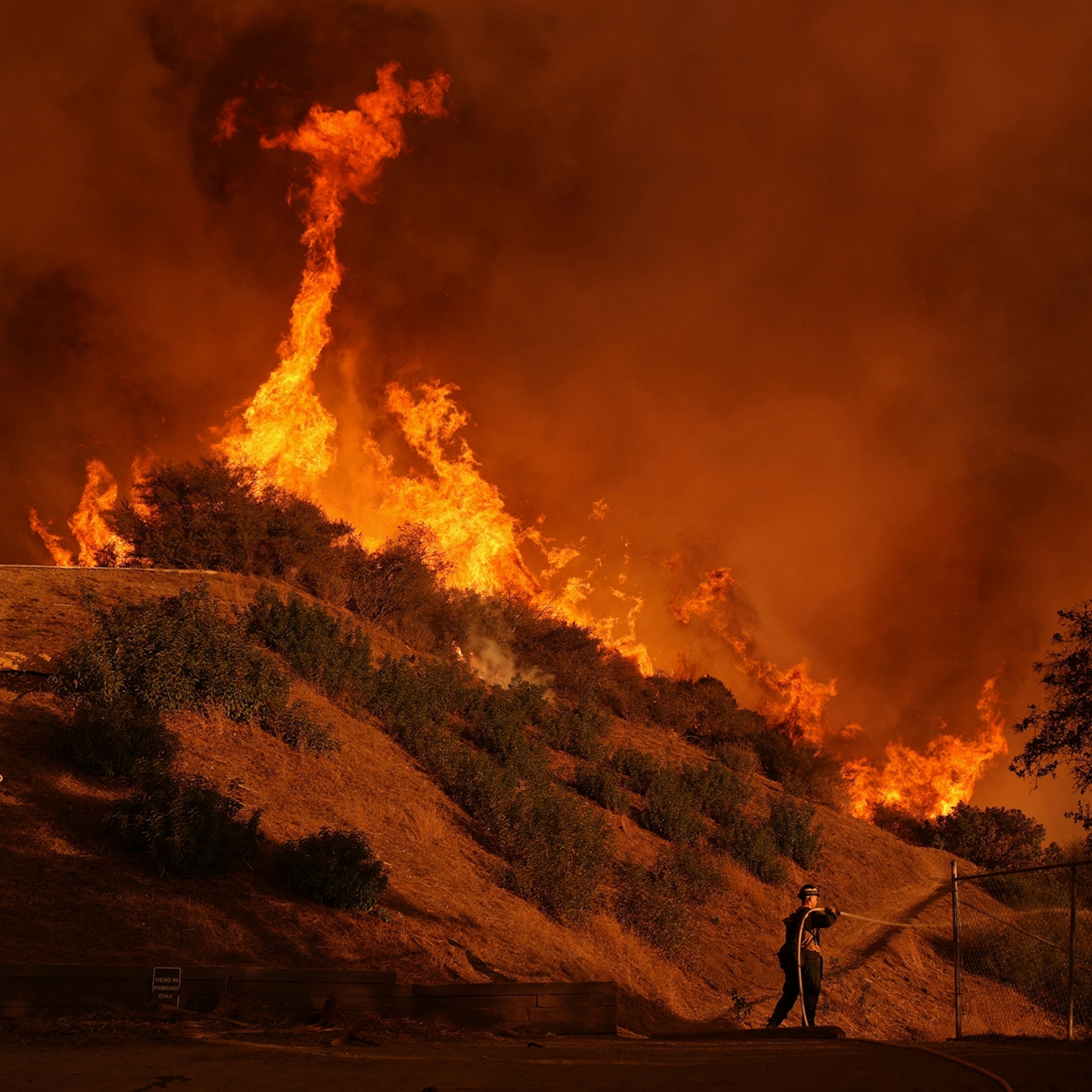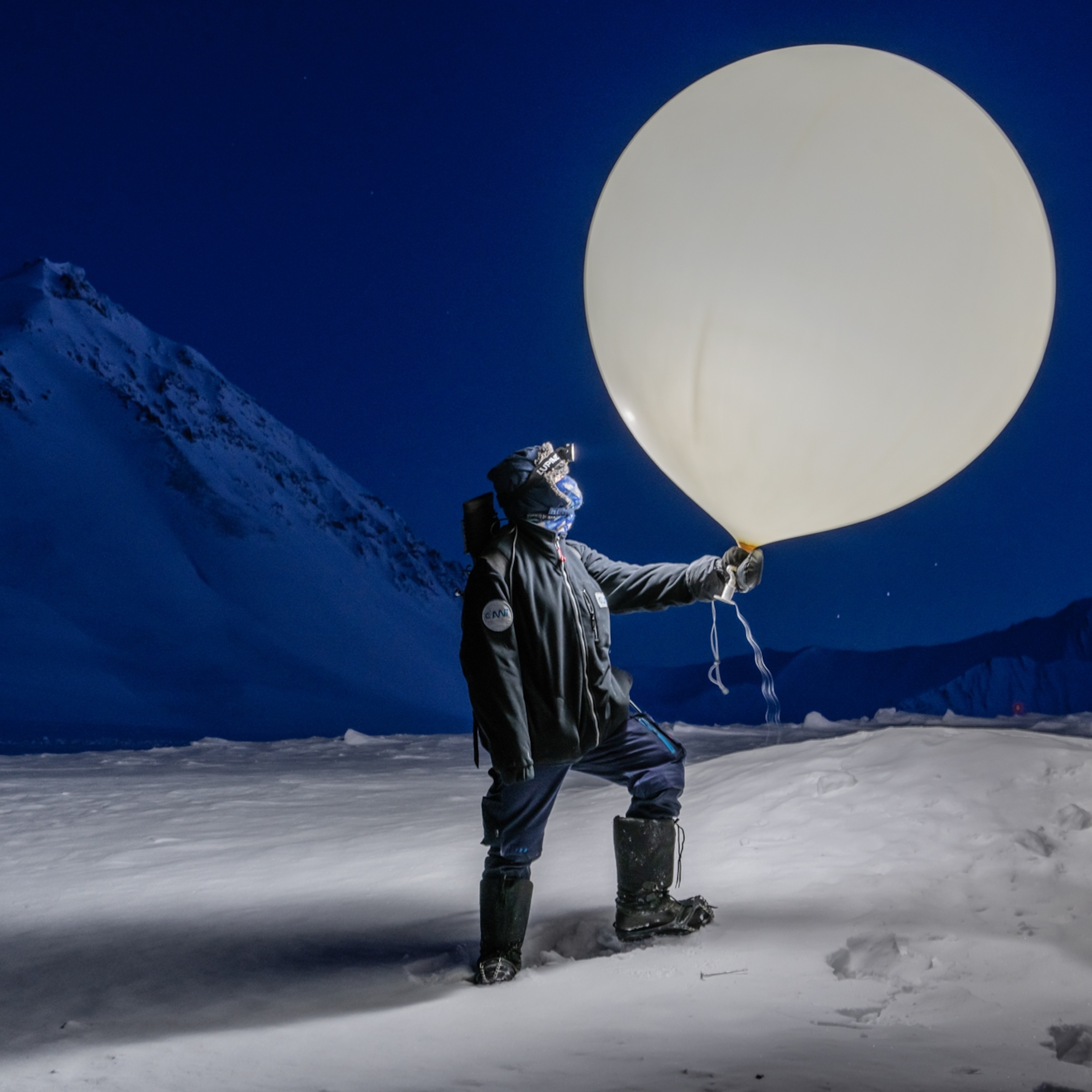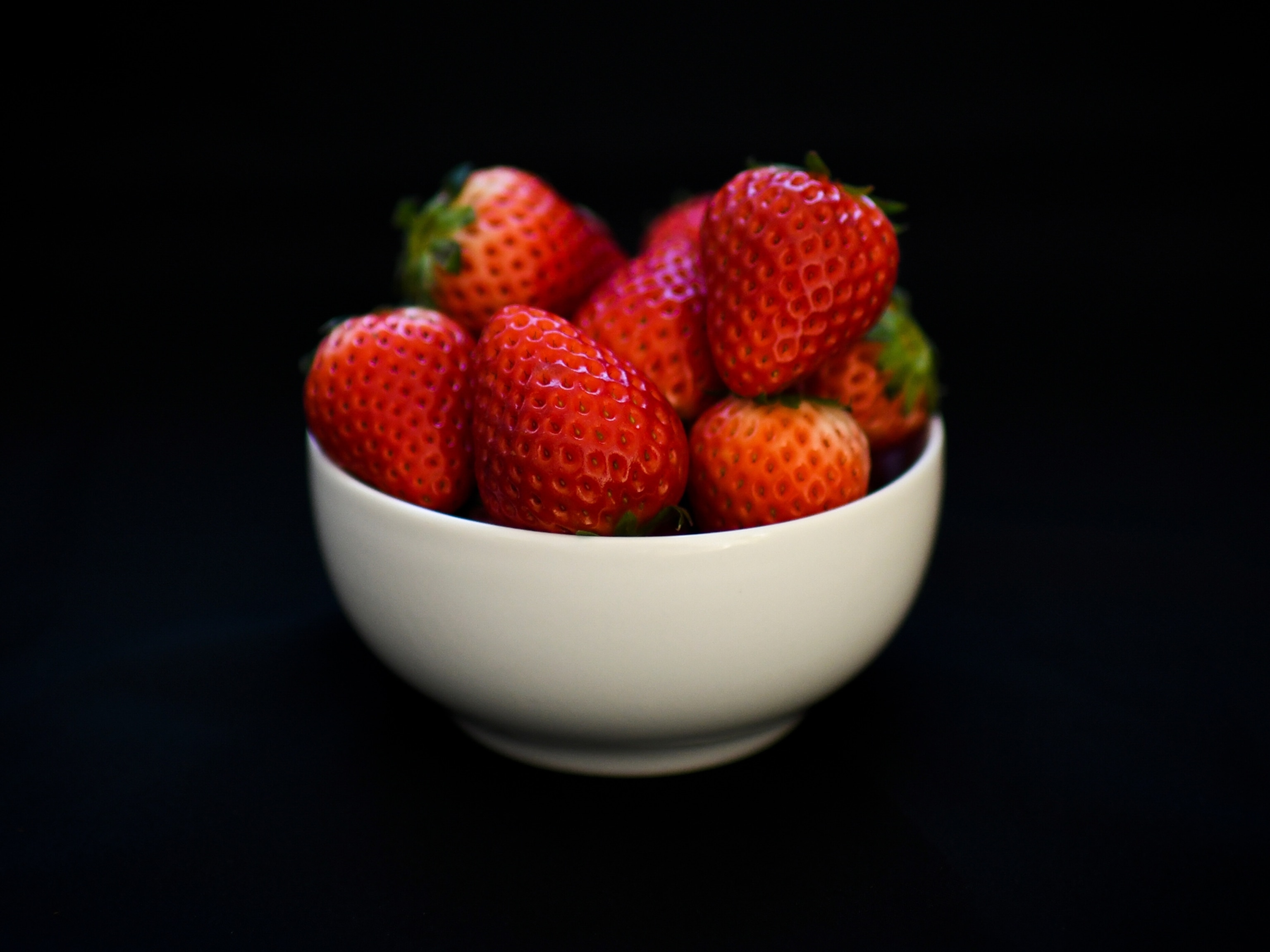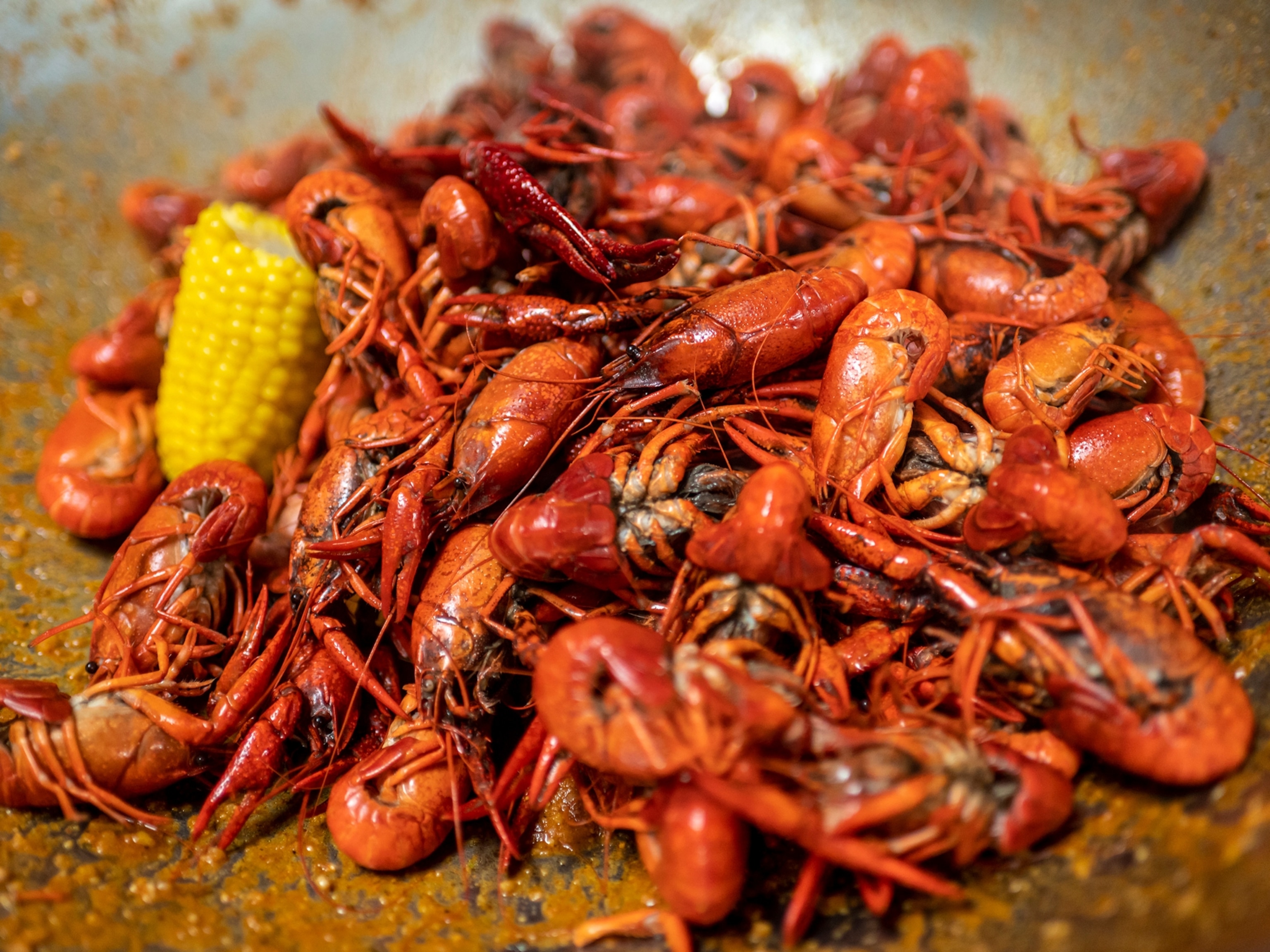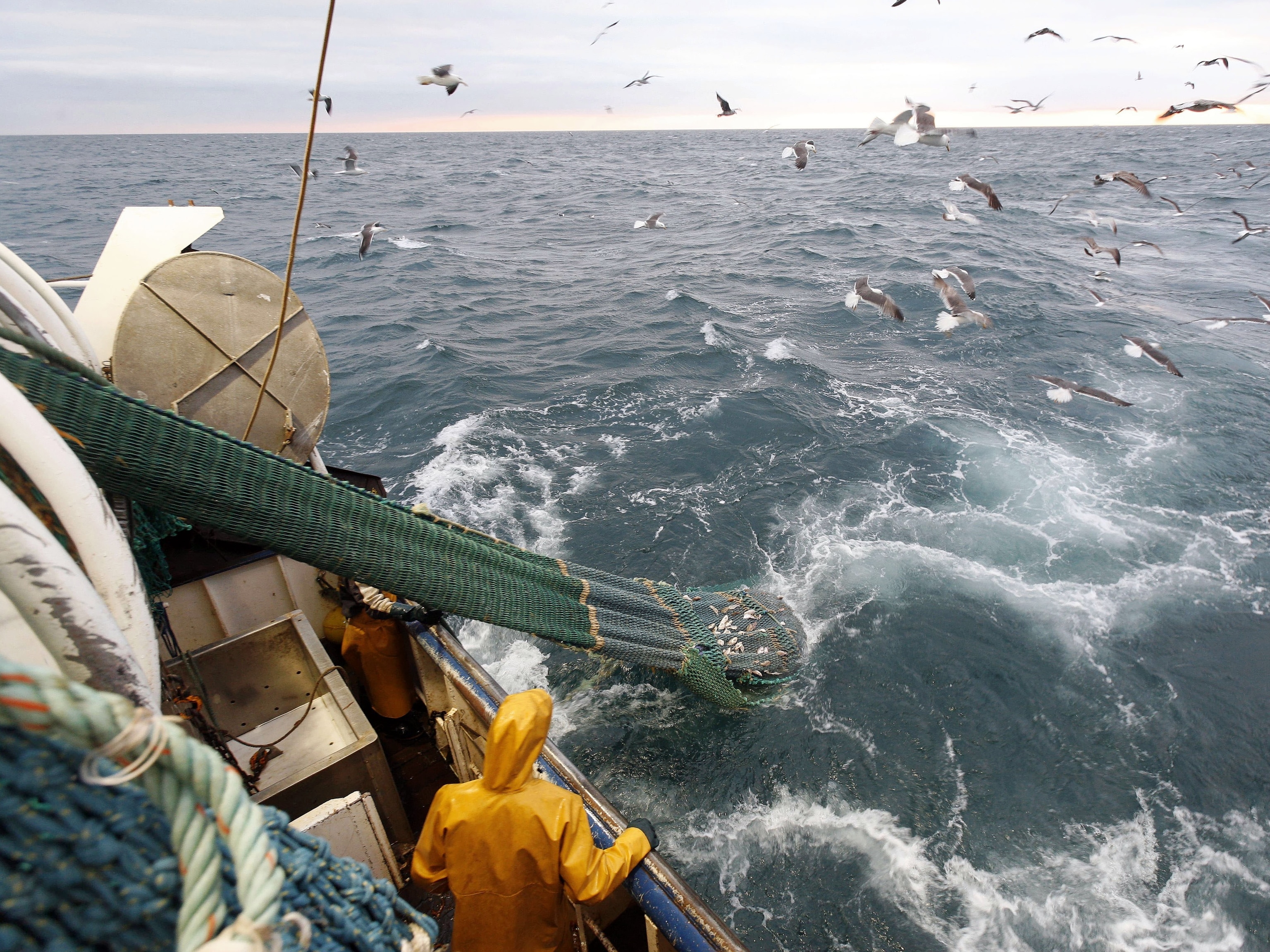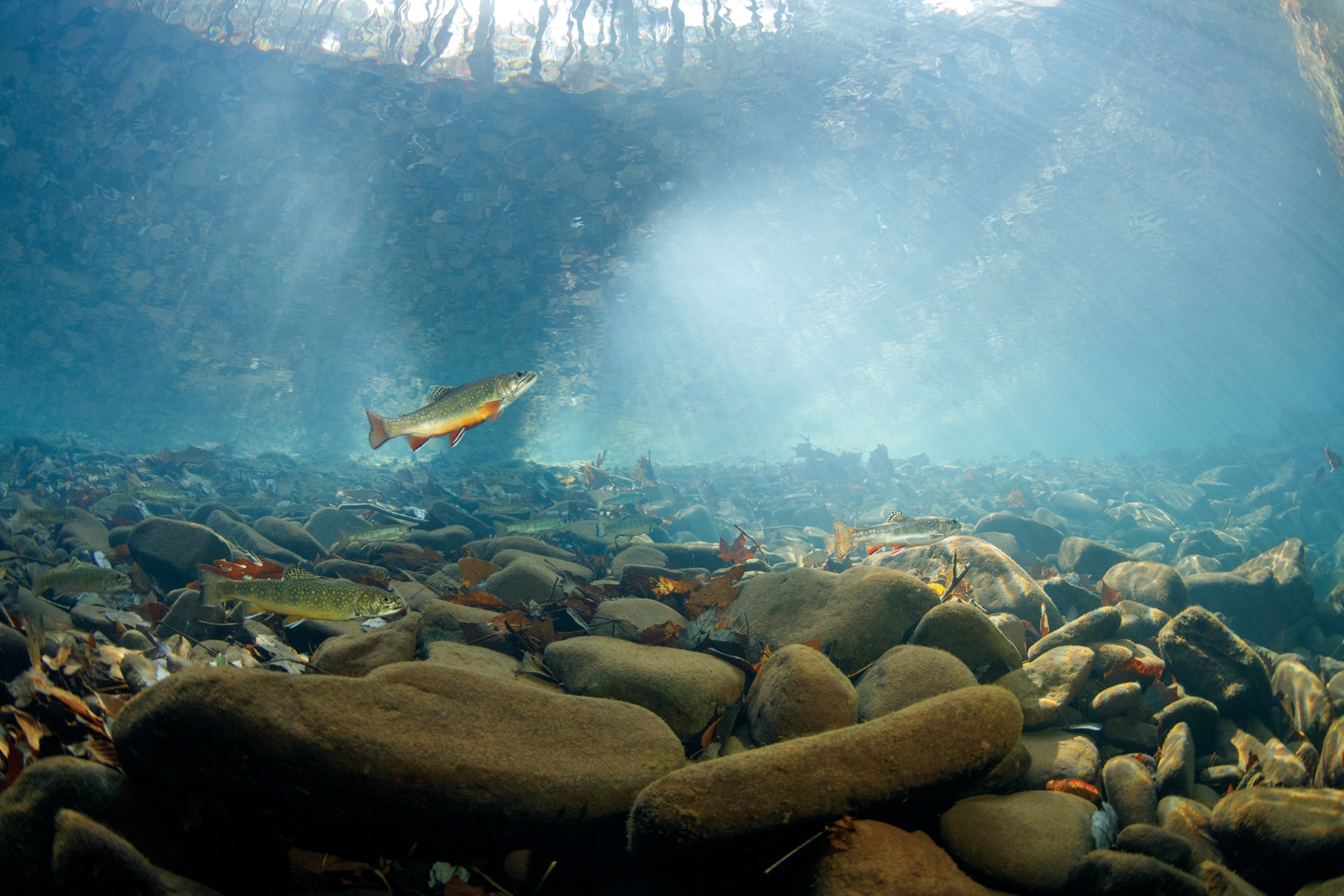
Climate change comes for a favorite summer pastime: fishing
After multiple summers of drought and fire, fishing holes there and elsewhere are feeling the heat.
The Middle Fork of the Flathead River is born in the high, rocky country of western Montana, near the roof ridge of North America. For dozens of miles it rolls through green wilderness, taking in the snowmelt from Muskrat Pass and Slippery Bill Mountain and a half dozen creeks as it grows into one of the beloved waterways of the American West.
On a warming midsummer morning, the waters curled like a cat around the shins of a short woman wearing polarized sunglasses and a trucker’s hat pincushioned with fishing flies. Hilary Hutcheson is a fly-fishing guide and climate activist who speaks to audiences across the nation. Her summer fishing season in western Montana is brief, which means frenetic, and by late July her voice, lightly scuffed at the best of times, sounded as if it were being played through old speakers.
“It’s almost Angry August, when all the guides get a little twitchy,” she told me. “The nights are just naps and the days are just packed. We say that we sleep in December.” Still, any chance to be on the water put her in a good mood. She pushed off and took the oars, nosing the bow of the fishing raft into the current.
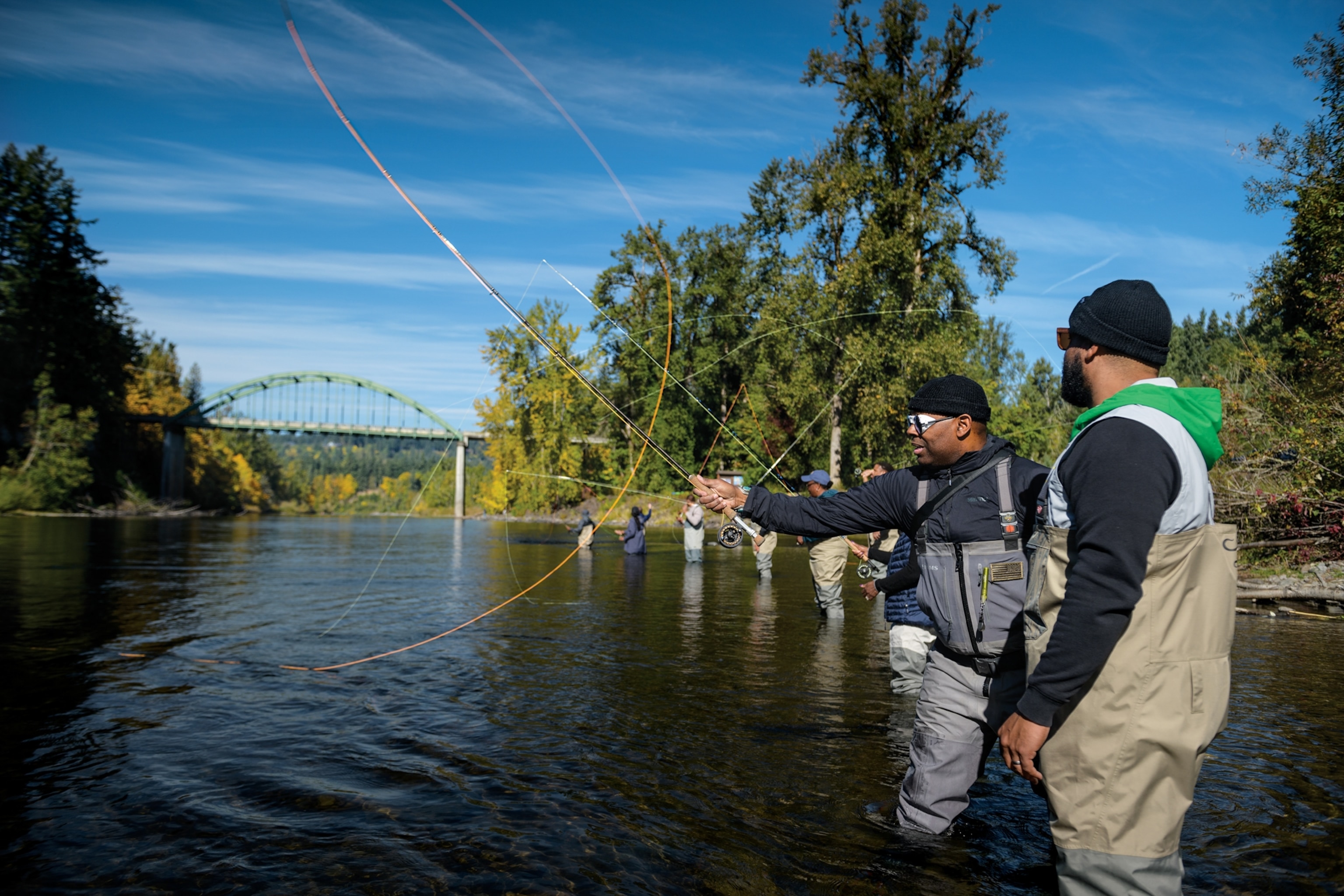
The day was yellow and warm. Cobbles colored the pale pink and faded green of old church fronts lined the shore. The river held the stones and sky and the fish within it as if in a jewel box. Hutcheson, 44, grew up here on the rivers of the Flathead region. She knows them better than almost anyone. Frequently she edged the raft out of the current, dropped anchor, and suggested we study the water together and consider what it told about where one of its handsome cutthroat trout lingered, feeding, beneath the surface. Only then would she tell me to cast to the fish. On a day like this, with the beer cold in the cooler and the air taut with hope, it was hard to believe anything could be wrong in the world.
But change has come to the Middle Fork. The glaciers and snowpack in nearby Glacier National Park, which feed cold, clear water into the river all summer long, are dwindling. The patterns of water flows are changing. Clients catch more hybrid fish than in the past. All this was evident already in 2019, when I spent time with Hutcheson—but last summer turned into one of the toughest yet on cold-water fish in the West. States from California to Montana had seen skimpy snows erased by a warm, dry spring. Many places then got record heat in late June. Fish suffered.
In Idaho, low water and high temperatures caused managers to close the Silver Creek Preserve, a world-famous trout fishery where Ernest Hemingway fished. In Montana, “hoot owl” restrictions, which forbid fishing from 2 p.m. to midnight, were ordered on world-class trout rivers to relieve fish from the stress of being caught and released in the hottest hours.
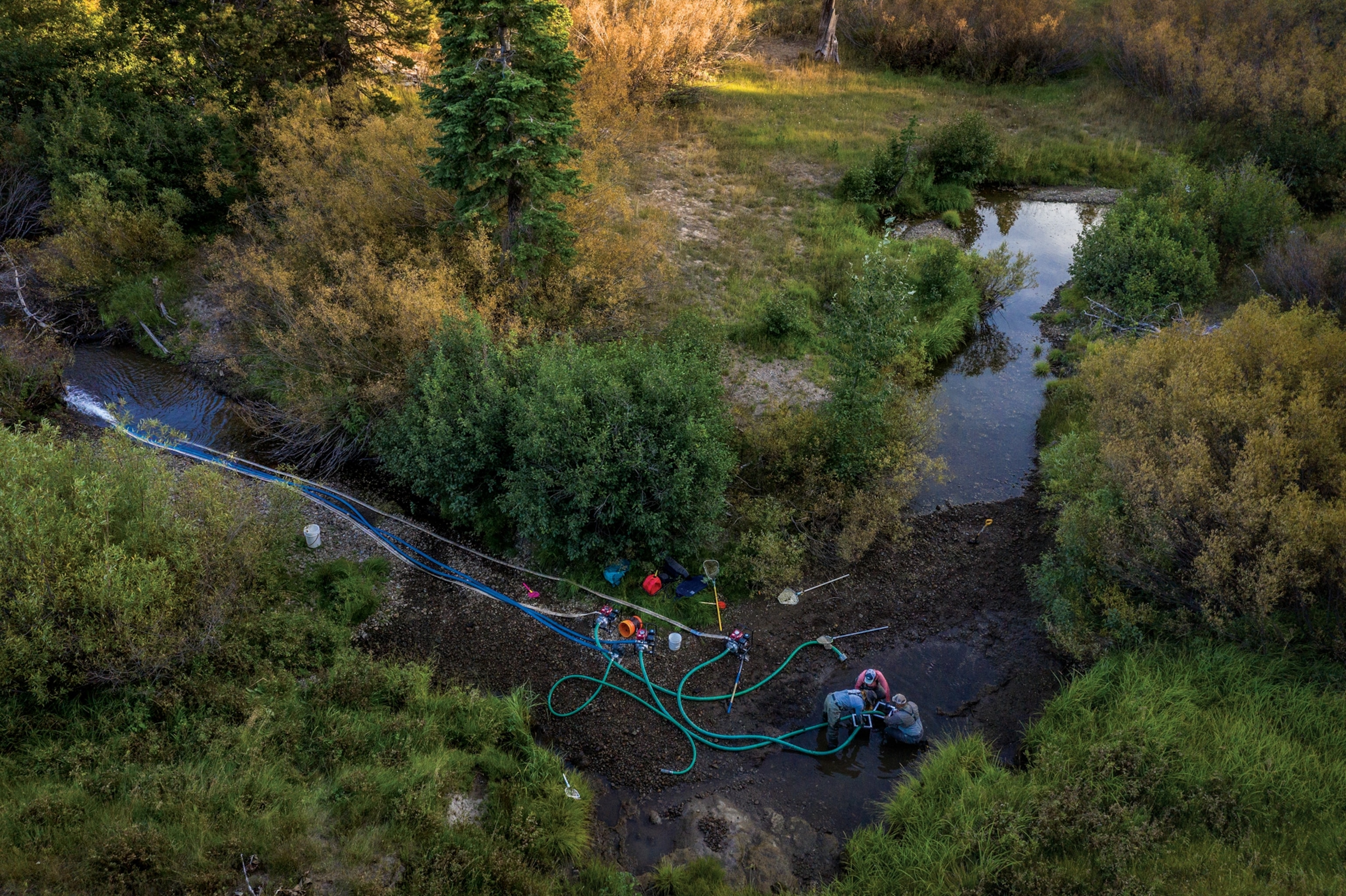
On the Flathead, one of the gravest threats posed by climate change to fish is genetic: Introduced fish are mating with native cutthroat trout, a mixing that has been abetted by changing water flows. If left unchecked, this could wipe out the cutthroat population, devastating a cherished American fishery.
When we talk of the climate crisis, we often focus on cataclysm—melting Greenland, or a Denver suburb aflame in December. Overshadowed are the subtler changes to our daily lives. One such change is the warming of cold-water lakes, rivers, and streams around the world. As these waters heat up, many fish will be in trouble. Which means fishing will be in trouble too. The changes are already under way.
To some this might seem picayune. But fishing has never been simply a pastime. Fishing is summer camp. It’s Saturday with your buddy or your daughter. For millions of people, fishing is a way to grasp the wriggling natural world in your hand. In many families, fishing is art passed down as heirloom, a tradition fashioned of wisdom and bound with 10-pound test line and a Palomar knot. “Now I know,” Ota Pavel wrote in his sad, perfect memoir How I Came to Know Fish, “that many who fish do not go out for the fish alone.”

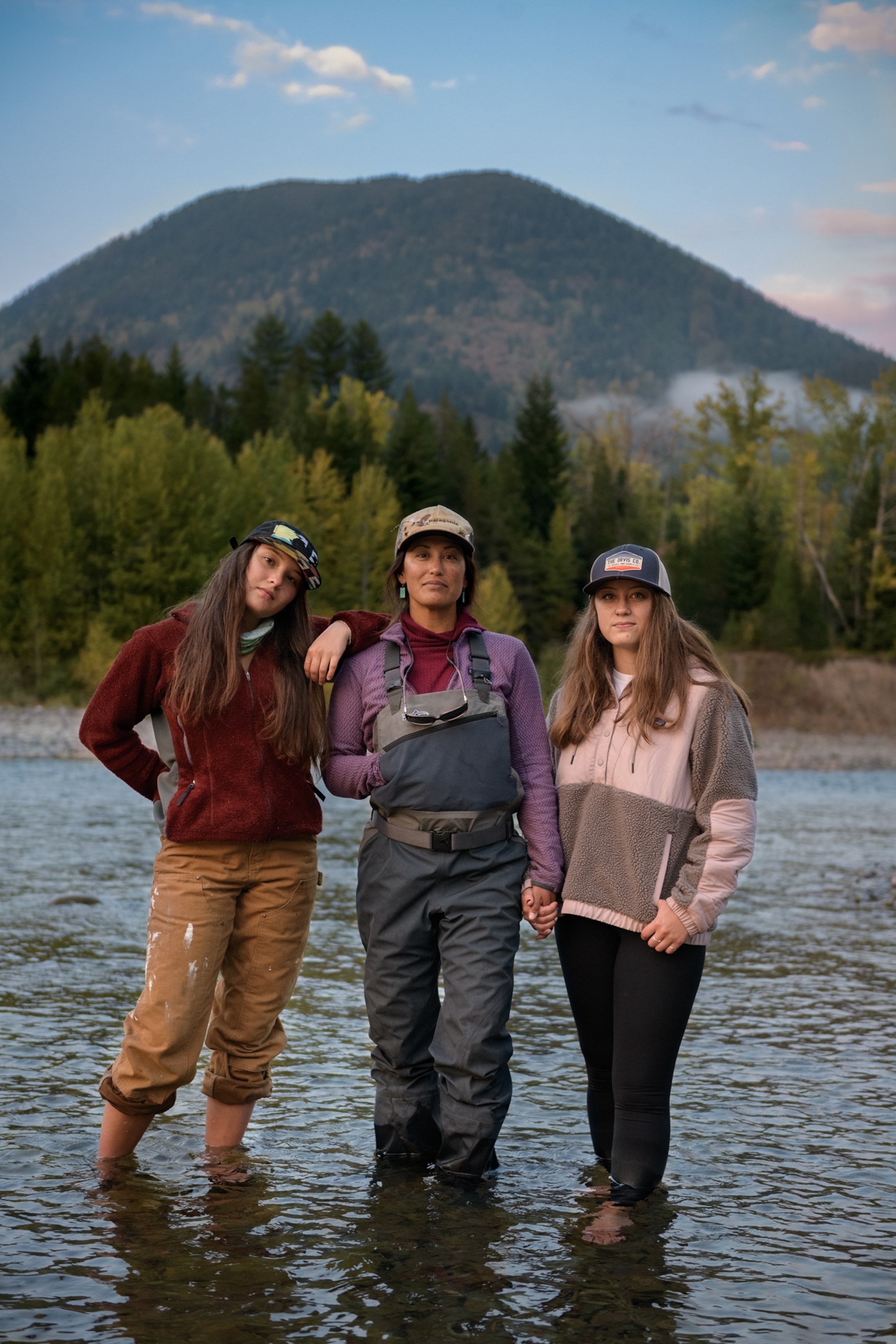
There are many ways to catch a fish. Hutcheson is a fly-fisher, which is arguably the most elegant kind and also the most ridiculous. Fly-fishers attempt to dupe a fish by tossing an artificial insect the size of pocket lint appetizingly upon the water, in just the right spot, using casts that take years to perfect and a second to bollix up. Fly-fishing favors obsessives, or else it creates them. By its nature, as writer Norman Maclean pointed out, it reminds us of our flaws but occasionally allows us to draw close to grace.
On the river that morning, Hutcheson said not to worry about those hybridized fish. We were upstream enough on the Middle Fork that we shouldn’t see any. I cast. The first fish I brought to hand was a mutt.
The second fish was too.
So was the third.
Around the world, more people fish for fun than for a living—at least 200 million in developed countries alone. Americans are particularly passionate: About one in six grabbed a fishing rod in 2021. Most headed to freshwater—the nation’s lakes, rivers, and streams. Fishing inland waters for recreation props up the economies of entire small towns like Ennis, Montana, and Maupin, Oregon, generating about $30 billion in direct spending alone in the United States each year.
Worldwide, though, freshwater fish went extinct twice as fast as other vertebrates during the 20th century. In North America almost 40 percent of inland fish are imperiled, a 2008 survey found—at 700 species, nearly double the number from just 20 years earlier. Why? We have bulldozed rivers and made them run as straight as aqueducts. We have logged mountainsides, paved riversides, and built homes there, sending silt and pollution into streams. We have introduced fish from elsewhere that outcompete the locals.
And now comes climate change to land yet another blow, like a roundhouse to a battered boxer.
Climate change is hitting many inland fish hard, directly and indirectly. As air temperatures rise, rivers and streams warm. Sometimes waters become too hot for fish to tolerate, or the warmth makes them susceptible to illness or pathogens.
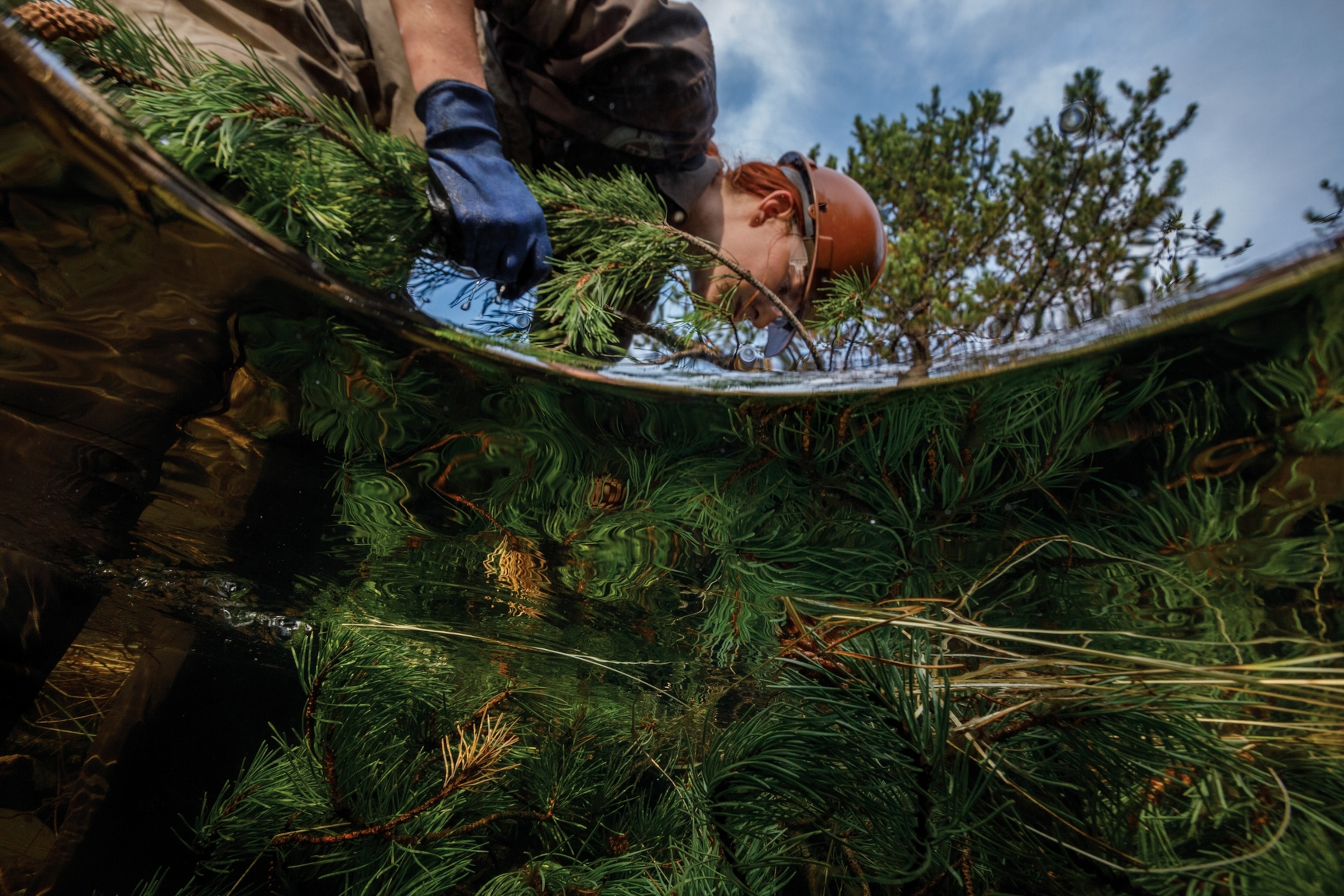
In the U.S. and elsewhere, winter snow in the mountains, snow that feeds rivers and streams the rest of the year, is giving way to rain that runs off right away. Snow arrives later in winter and often melts earlier in spring; in the northern Rockies, where Hutcheson lives, peak snowmelt has recently occurred weeks earlier than it used to. Less water in a river means less room for fish to live, which limits their population. Across the country, but especially in the Northeast and Midwest, there’s another problem: Much more rain now falls during heavy downpours. These rains scour streams of eggs and young fish.
So-called game fish that rely on cooler freshwater—walleyes, trout, salmon, whitefish, to name some of the most popular—are particularly squeezed. Consider the brook trout, with its olive back scribbled with runes and sides freckled with haloed dots. “Brookies” are frequently said to be our nation’s loveliest fish. Anglers pursue them in the coldest, cleanest streams of the East and upper Midwest, their native range. But in Wisconsin, brook trout are projected to disappear around 2050 from nearly 70 percent of the 21,000 miles of rivers and streams where they now swim. In the southern Appalachians, brook trout will retreat ever higher up the mountains, keeping to the coldest water, until they run out of mountains altogether. In time, Virginia may lose its state fish.
Walleyes are one of the most popular sport fish in Wisconsin; by 2090 they’ll be unable to sustain themselves in a third to three-quarters of the lakes in the state that now hold them. Even rainbow trout, one of the most commonly stocked fish, could see its usable waters decline substantially in the Midwest and in the West too.
Hutcheson still recalls the day a friend’s uncle put a fly rod in her hand when she was a girl, and she caught her first cutthroat trout on the Middle Fork. Soon she and her sister taught themselves to fly-fish. Then, in 1992, the film A River Runs Through It appeared, based on Maclean’s classic novella of Montana fishing and family ties. The country went crazy for fly-fishing, or at least for a young Brad Pitt in a wet shirt. The sisters became among the first female fishing guides in the area.
Today Hutcheson owns a fly shop in Columbia Falls, Montana, the riverside town where she grew up. She writes about fishing, often with a conservation bent. She works as a guide about 120 days a year and fishes professionally all over the world. But wherever she goes, she told me, she always looks forward to coming home and fishing for cutthroat.
“Cutties” are a special fish, she said. “They pull, they fight, they run.”
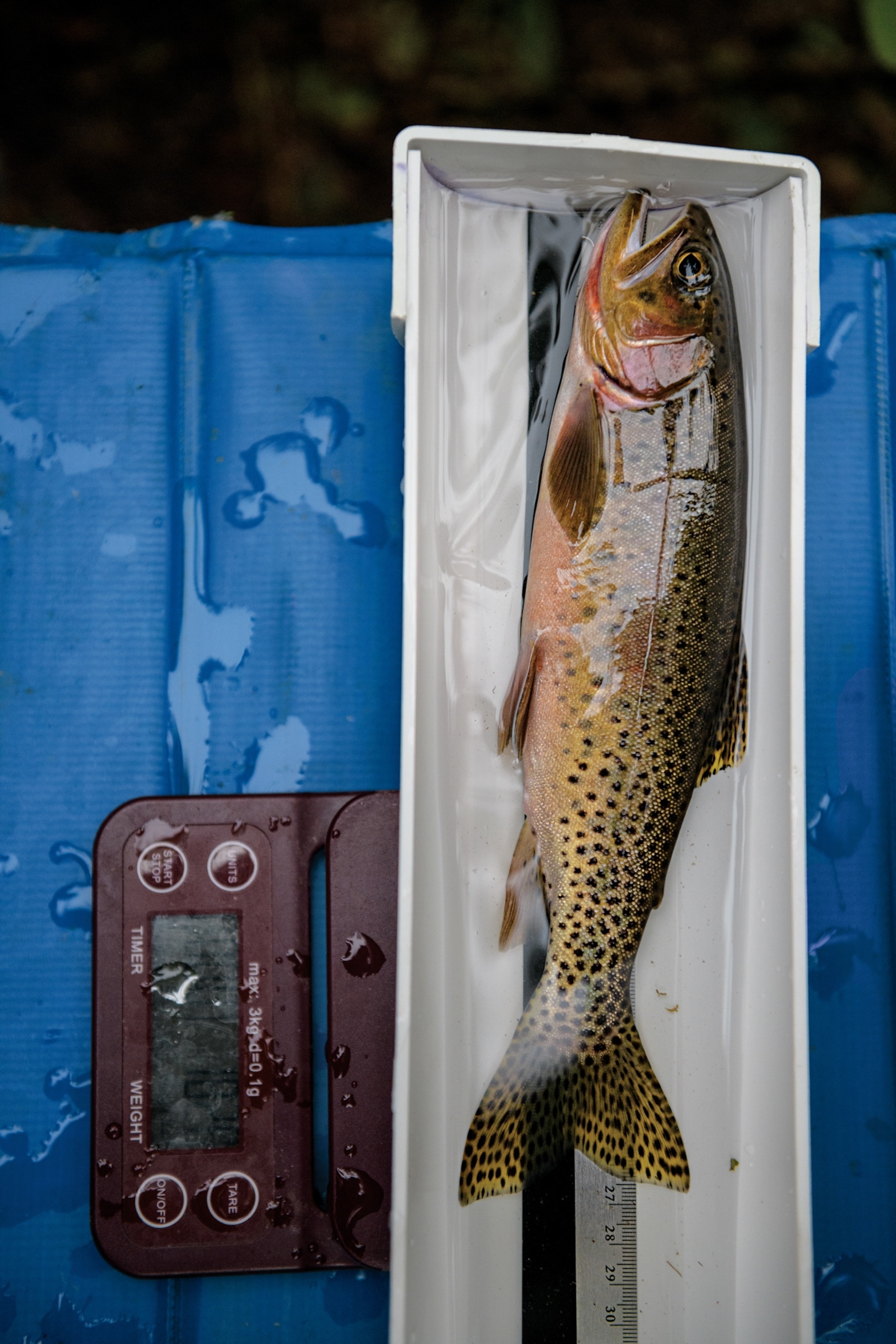

Given how many anglers are seeing their favorite fishing holes affected, you might expect more of an outcry from them about climate change. It’s happening, but for many it was slow to develop. Hutcheson had been paying attention to the issue since college. As a young guide, she grew frustrated by the changes she was seeing on the river and by politicians’ inaction. Start showing influential people these places and speaking up, her siblings told her. She listened.
“Somebody else isn’t going to do it,” she told me. “We are ‘they.’ ”
Hutcheson’s been to Washington, D.C., several times to lobby Congress and the White House for Protect Our Winters, a group of more than 200 professional athletes, artists, and others whose work is affected by climate change. She talks about changes she sees on the rivers—and the effect on her hometown. “I care about humans who will lose their jobs, their livelihoods, and their fundamental happiness as this system collapses,” she told a congressional panel in 2019.
The year before, massive wildfires had torn through Glacier National Park and the surrounding area, keeping Hutcheson off the river for nine days. “When we get shut down during fire season, at the height of my fly-fishing season, I can lose a winter’s worth of groceries for my family,” she told me. The main businesses in her town that still thrive during times like those, Hutcheson says, are places that sell liquor.

Such concerns led her to the work of Clint Muhlfeld—and to an indirect way that climate change is threatening her beloved river and its native species. Muhlfeld is an aquatic ecologist for the U.S. Geological Survey, in western Montana. As the mercury climbed toward the 90s one day, he, Hutcheson, and I drove to the North Fork of the Flathead, on the western boundary of Glacier.
The North Fork courses here through a wide, cobbled floodplain, tracing a new path each spring. In the distance, Glacier’s chipped teeth still were piebald with snow in midsummer. Muhlfeld, a lean, excitable man with a tattoo of a bull trout on one ankle, stood in the bow of the raft, clutching a fly rod.
“We’re at the invasion front, right here,” he said, as Hutcheson pushed off.
Over decades, people stocked roughly 200 million rainbow trout in Montana’s rivers and lakes, including 20 million in the Flathead River system. Fish were stocked all over the West to buoy the sport fishery, often simply dumped from railroad cars banging across the country. Rainbow trout, which are primarily native to coastal streams of the northern Pacific Rim, leap high when hooked, and they taste good, and even today many anglers enjoy bagging them. But there’s a problem: They reproduce with all 12 subspecies of cutthroat trout, most of which, like the westslope cutties in the Flathead, are native to the interior waters of the West. Today cutties occupy less than 10 percent of their historical habitat. That habitat loss and hybridization are the main reasons they’re struggling.
The U.S. Fish and Wildlife Service has declined to designate westslope cutthroat as an endangered species, declaring that a cutthroat with up to 20 percent rainbow genes is still a cutthroat. Muhlfeld and colleagues decided to test that assumption. Their results shocked them: If a cuttie contains just 20 percent rainbow genes, the trout’s “fitness,” as measured by the survival of its offspring, is reduced by at least half.
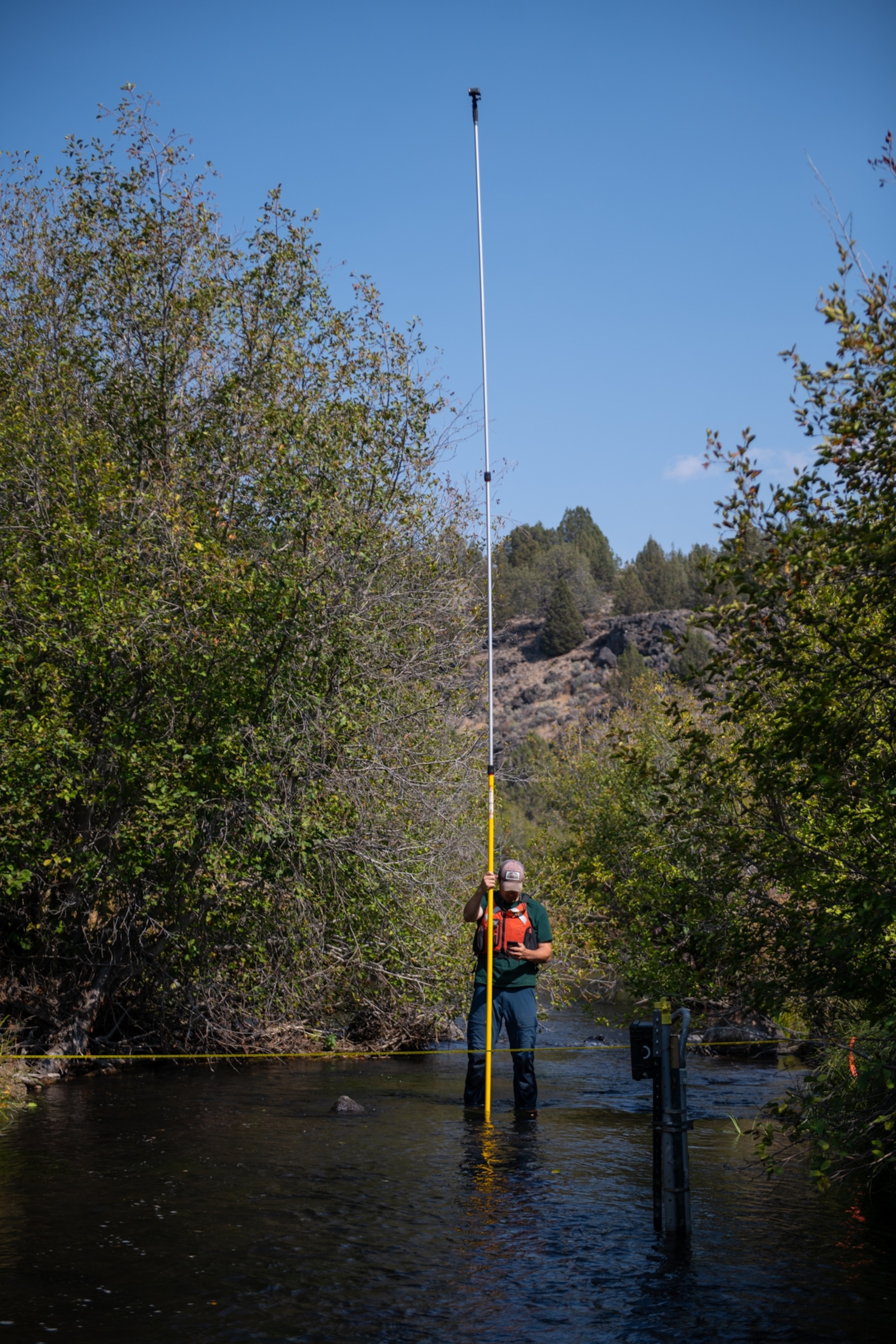

As the boat drifted, I caught a modest fish on the fly. Hutcheson scooped it into the net and showed it to Muhlfeld. He pointed out the vibrant slash under the jaw, the rosy belly that indicated the fish had spawned this year, and the dense spots above its lateral line, a sense organ that runs the length of its body.
“Oncorhynchus clarkii lewisi,” he said appreciatively. “That fish right there is likely a genetically pure cutthroat trout.” It has the genes, the adapted traits, that make it perfectly suited to survive and persist here, as it has done since the last ice age. As a species, cutthroat trout have survived periods even warmer than today.
“Beautiful fish,” Muhlfeld said, handing it back to the river.
Later I landed another fish. Muhlfeld peered into the net. His tone changed. He pointed out how the slash beneath the jaw was fainter and how the spots appeared both above and below its lateral line. “Probably a low-level hybrid,” he said—a cutthroat with a dash of rainbow.
Hybridization is a problem both for fish and for fishing, he said. Rainbow trout are roughly equivalent to factory-farmed chicken. When they breed with native cutthroat, they adulterate thousands of years of wild genetic wisdom. The mongrel fish aren’t as suited to their environment or as nimble at adapting to change.
For many years the problem was more or less contained. Rainbow trout largely stayed where they were introduced in the lower reaches of the Flathead system. They spawn earlier in the spring than cutthroat do, and high spring runoff would wash away their eggs, scientists think.
But climate change has tinkered with that equation. More frequent times of low water seem to be permitting introduced rainbow trout to spread farther upriver and breed more often with native fish. In one area, the amount of gene-swapping increased tenfold over the past 30 years, Muhlfeld and colleagues found. Rainbows are “ticking time bombs waiting to go off, under the right environmental conditions,” Muhlfeld said.
In the early 2000s, when the Flathead saw some dramatically lower spring flows, hybridization appeared to surge. Years like those, once outliers, are projected to become more common as climate changes—each delivering a fresh injection of less-fit hybrids.
Simply put, these inferior fish will find it harder to survive. There may be fewer fish in the river, Muhlfeld said. And these “cut-bows” are not as feisty and as fun to catch, Hutcheson added.
None of this is good for those who love fish and fishing, she said. She plopped the fish I’d caught back into the river.

Fishing will not end as lakes and rivers warm. The sport will suffer severely in places, though, and will look very different in others. As fish such as trout retreat, they often will be supplanted by smallmouth bass or other species that can tolerate warmer water. “It’s still a fish you can fish for,” Robert Al-Chokhachy, a research fisheries biologist with the U.S. Geological Survey, told me with a shrug. But being more common and widespread, those species may not attract as many people to a place or as much revenue. And there’s another kind of loss when native fish are replaced by ones that could be found most anywhere: It makes for a grayer, more impoverished world, where everyplace is more like anyplace else.
In Fishing Through the Apocalypse, writer and conservationist Matthew Miller cautions readers not to overromanticize the pastime they think they know. That rainbow trout arcing over a pluperfect Montana scene in A River Runs Through It? Humans put that trout there. In most places, fishing hasn’t been an unsullied wilderness experience for a long time. When some anglers today sit at their computer, hitting the refresh button, waiting to find out when a tanker truck from the state wildlife agency will back up to their local lake and dump a load of hatchery-raised fish—this too is fishing. And this too is communion with nature. It may become more common in the future.
Many scientists I spoke with offered surprising optimism—not about our ability to stop climate change but about the things we can do to help cold-water fish survive. In the Flathead River system, for example, aggressive moves by tribal, state, and federal governments to beat back introduced fish so far have kept the threat in check, Muhlfeld said. In addition to eradicating non-native and hybrid fish directly, workers have dug up rainbow trout redds, or spawning beds, in creeks; they’ve placed barriers in some creeks to protect pure fish from intruders. The downside of such work is that it may have to be done forever.
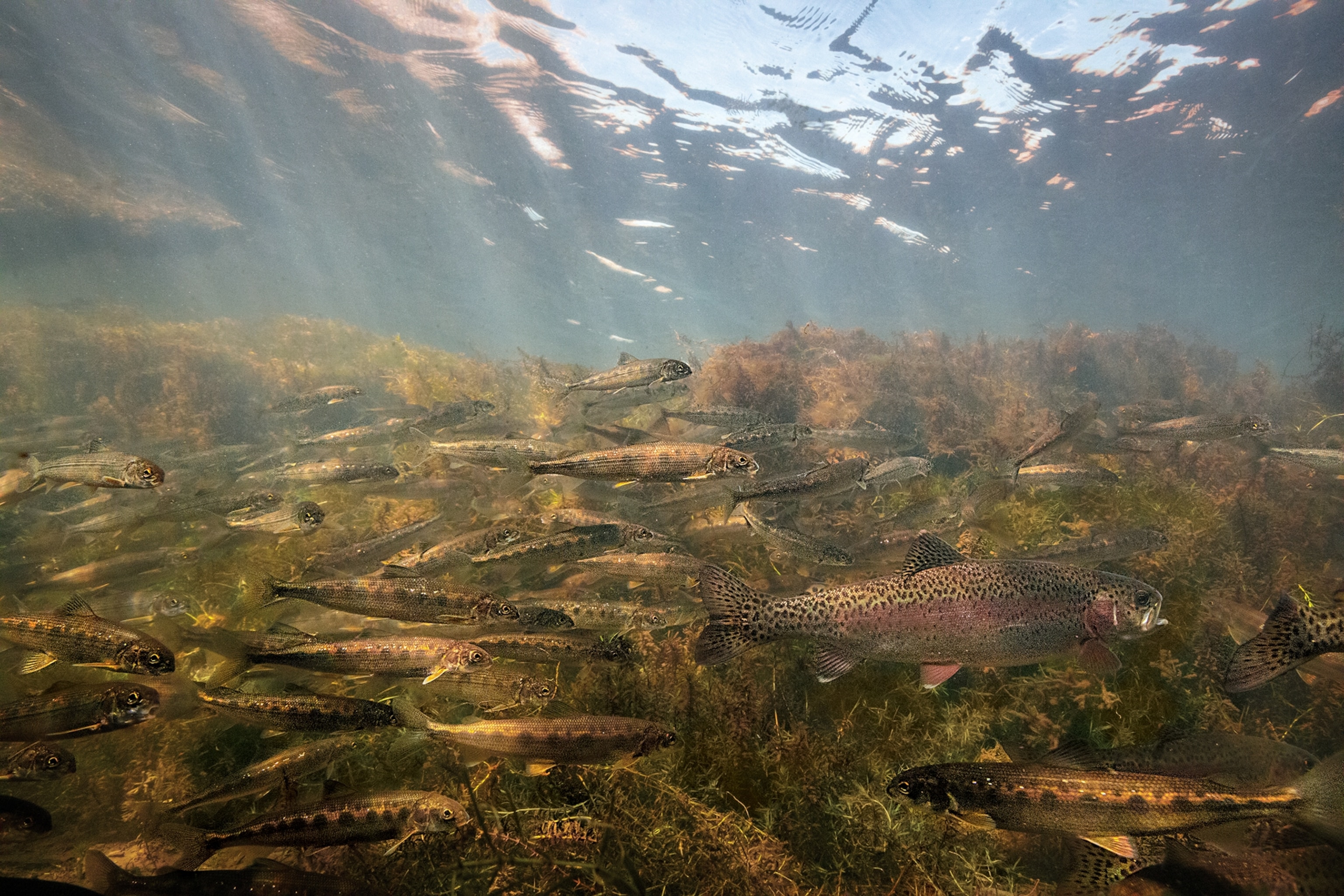
Theoretically it’s also possible to cool down streams and rivers, even as air temperatures rise. The John Day River in northeast Oregon is home to the biggest wild run of Chinook salmon, a threatened species, in the Columbia River Basin. Clearing of forest that once lined the riverbanks has been the major reason the John Day’s waters have warmed, allowing smallmouth bass to invade the upper watershed. By century’s end they could eliminate the Chinook there.
But in a 2019 study, scientists estimated that shading 23 miles of the upper river with mature native forest would lower the average daily high temperature of the water a startling 10 to 12 degrees Fahrenheit. Of course, you’d need to plant 23 miles of forest, then wait many years for the shade. Such reforestation projects are under way, though, on the John Day and across the West.
“We have solved conservation issues that have seemed intractable,” said Miller, who works at the Nature Conservancy. “The issue is that we often wait till things get really bad and then try these last-ditch efforts.”
There’s another reason for some hope: Models that predict a bleak future for inland fish do not account for the possibility that fish could adapt to a changing world. A 2011 study of sockeye salmon from eight populations in British Columbia migrating up to 700 miles in the Fraser River system found that even though the sockeye looked identical, the fish have developed adaptations to undertake migrations of wildly different lengths, intensities, and water temperatures.
“This shows us that within a species, different populations can adapt to their specific conditions,” said lead author Erika Eliason, a zoologist now at the University of California, Santa Barbara.
If we can buy time for fish, perhaps they can adapt and persevere in this new world humans are creating. Sometimes they may need a helping hand: Muhlfeld and colleagues have been putting imperiled bull trout in backpacks and carrying them to higher altitudes in Glacier, to help them find cooler waters they can’t reach on their own.
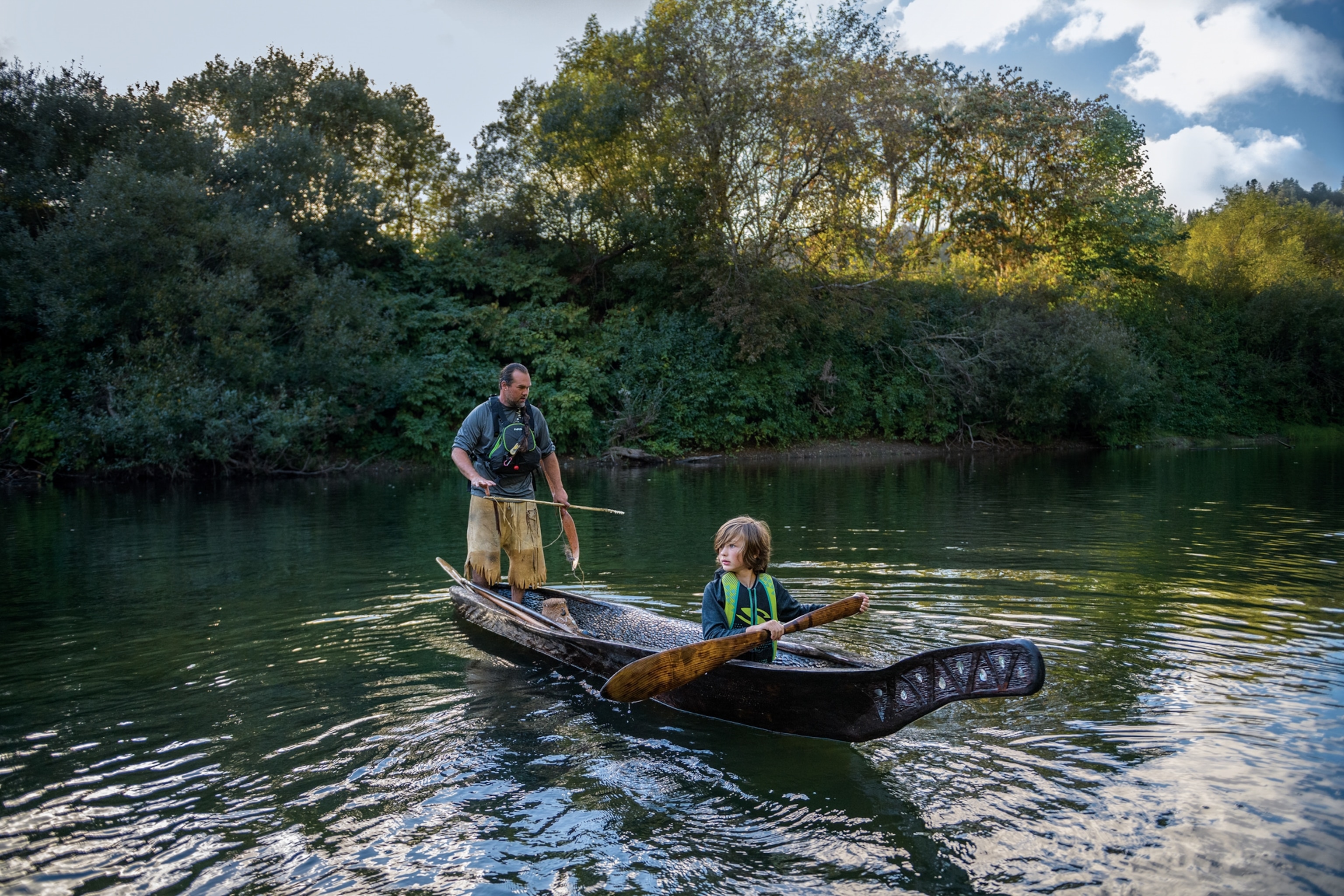
More often, though, we can help fish by keeping their homes as unchanged as possible. We know what Flathead cutthroats need, for example: “Cold, clean, complex, and connected habitats,” Muhlfeld said. The “connected” part is crucial. Middle Fork cutthroats are kissing cousins to North Fork ones, yet genetically distinct. Any of them might hold the genetic wisdom to help the species do well in the future—as long as the river still allows them to persist and mix.
Faced with weekly headlines about another catastrophe, the loss of a favorite fishing hole—or even a fish in a river—may not seem to rate. But it’s no small thing that this too is the world we’re making: a world that erodes, and sometimes erases, the simple pleasures that give us respite, make us smile, and brighten the days with silver shards of beauty. A ski through deep snow. Ice-skating on an open lake. Gardening. Bird-watching. Fishing.
As we drifted down the river one day, I asked Hutcheson whether she despaired, knowing how bad things might yet get. She waved me off. Mourning was what you do over the dead. There was still time. Her job now was to get people to act.
“We still try. We try, try, try,” she said. “We’re alive right now, and for me, being alive is to try.”
If fishing is anything, it’s the relentless practice of hope. It’s the belief that no matter how much we’ve fallen short, next time we’ll do better.
Hutcheson tied a new fly onto the tippet of my line. She raised the anchor, took the oars again, and returned us to the embrace of the river. She told me to cast.
This story appears in the June 2022 issue of National Geographic magazine.
This story originally published digitally in August 2021 and has been updated with more detailed text and captions.


